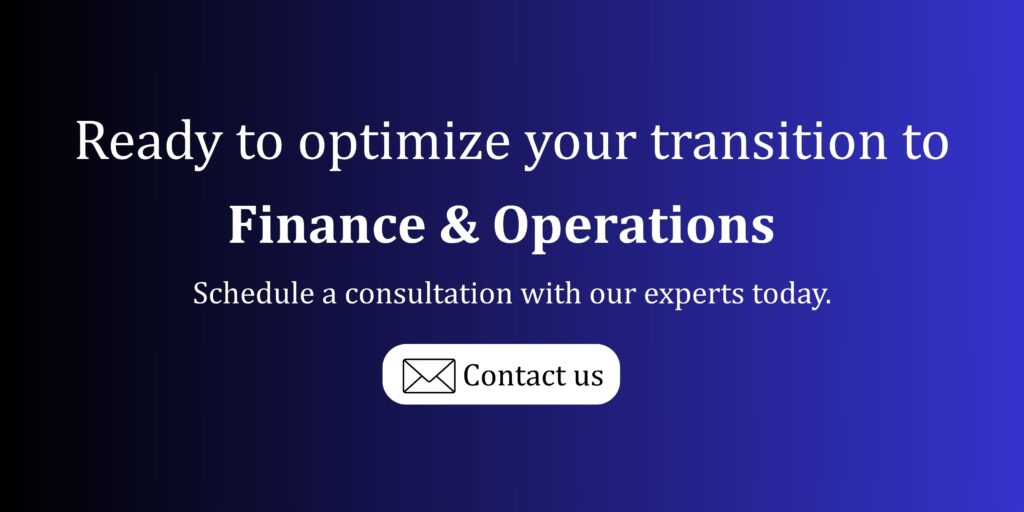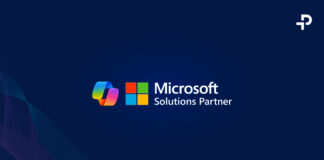Migration from Dynamics 365 AX to Dynamics 365 F&O (Finance and Operations)
Migrating from Dynamics AX to Dynamics 365 Finance and Operations is a strategic move that drives business growth. This cloud-based ERP solution offers scalability, streamlined operations, and resource flexibility to boost productivity and reduce costs.
Microsoft Dynamics 365 F&O provides powerful tools for automating tasks, gaining insights, and making data-driven decisions. The migration lays the foundation for a future-ready ERP system that supports your business goals in today’s digital landscape.
Understanding key difference between AX and Dynamics 365
The shift from Dynamics AX to Dynamics 365 Finance and Operations (F&O) involves more than just a version upgrade—it’s a fundamental transformation. Understanding the key differences is crucial for planning a successful migration.
The most notable change is the move from on-premise (AX) to a cloud-based model (D365 F&O), offering benefits like enhanced security, automatic updates, and remote accessibility.
Architecture and data handling also differ. Your migration path depends on your AX version:
- AX 2012 R2/R3: If customizations are minimal and the database is moderate in size, a full upgrade is often feasible.
- AX 2009 or earlier: A full upgrade isn’t supported; only master data and open transactions can be migrated using Microsoft’s data migration framework.
Dynamics 365 also delivers stronger integration capabilities through robust APIs, enabling seamless connectivity with Microsoft and third-party tools. Its modern UI enhances usability and productivity, while real-time data and built-in analytics support better decision-making.
For heavily customized systems, D365 F&O may already include features that replace custom developments. Existing customizations should be reviewed to determine what can be replicated or replaced.
Recognizing these differences helps shape a solid migration strategy and ensures the right tools are used for a smooth transition.
Migration Roadmap from AX to Dynamics 365 Finance and SCM
Successful migration from Dynamics AX to Dynamics 365 Finance and SCM requires a systematic approach following distinct phases. This structured roadmap ensures minimal disruption during your transition to the cloud-based platform.
Assessment and Planning
A successful Dynamics 365 migration begins with assessing your AX environment. Identify key processes, customizations, and integrations. AX 2012 R2/R3 users with minimal customizations can often upgrade, while AX 2009 or earlier requires a full migration due to tool incompatibility.
Data cleanup and preparation
Before starting your D365 data migration, clean your AX data by removing obsolete or redundant entries to avoid integrity issues. Then, map data fields to their corresponding locations in D365 to ensure accuracy. Microsoft’s migration tools transfer only master data and open transactions—historical data must stay in AX or be moved using Azure tools for warehousing.
Customisation and Integration
Review existing customizations to identify what’s still needed—many may be replaced by built-in D365 features. Use the extensibility framework for necessary changes instead of direct customizations. For integrations, leverage D365’s robust APIs to align system connections with your business processes.
Testing and Validation
Use a sandbox environment to test without risking live data. Conduct user acceptance testing (UAT) with key stakeholders to ensure data and processes meet business needs. Include regression and integration testing to confirm existing functions work as expected.
Training and Change Management
Create focused training programs to address D365’s interface changes. Use change management to highlight benefits and address concerns. Strong leadership and clear communication help ease the transition and drive user adoption.
Go-Live and Post-Migration Support
Post-implementation support ensures you get the most from D365 through system monitoring, issue resolution, and updates. It also helps identify gaps and continuously improve operations.
Benefits of migrating to Dynamics 365
Investing in a D365 migration strategy offers strong operational and financial returns. Upgrading from Dynamics AX unlocks advanced capabilities that directly improve efficiency and profitability.
Scalability and Performance
D365’s cloud architecture scales with your business, ensuring high performance without hardware limitations—even during peak periods.
Lower Infrastructure Costs
The cloud model removes the need for costly on-premises hardware and maintenance. It shifts spending from capital to predictable operational expenses, improving cash flow.
Enhanced Security and Compliance
D365 delivers stronger security through multi-factor authentication, encryption, regular audits, and built-in compliance with standards like GDPR.
Streamlined Integrations
Robust APIs enable seamless integration with Microsoft and third-party apps, reducing manual tasks and data silos.
Built-in Intelligence and Reporting
Advanced analytics and real-time reporting turn data into actionable insights, supporting smarter, faster decision-making.
Fewer Customizations
With extensive out-of-the-box functionality, D365 reduces the need for custom development, simplifying migration and long-term maintenance.
In short, D365 migration is more than a system upgrade—it’s a strategic move that drives measurable business value.
Migration Vs Upgrade
Understanding the difference between an upgrade and a migration is key to planning your D365 strategy. Though often used interchangeably, they involve different approaches:
- Upgrade converts your entire database, keeping historical data and settings.
- Migration transfers only master data and open transactions; historical data stays in the old system or requires separate storage via Azure tools.
Choose Upgrade If:
- Using AX 2012 R2 or R3
- Minimal or no customizations
- Few or no ISV modules
- Small to medium databases
- No major configuration changes needed
Choose Migration If:
- Using AX 2009 or AX 2012 (pre-R2)
- Changing financial or inventory dimensions
- Altering costing methods
- Large databases (over 1TB)
- Reducing or replacing many customizations
- Multiple ISV products installed
- Phasing legal entities gradually
Microsoft’s migration framework transfers only master and open data, offering a fresh start but requiring planning for historical data access.
Your strategy should reflect your technical environment, business goals, and growth plans. Regardless of the method, thorough testing—regression and integration—is critical to maintain system and data integrity.
An implementation partner can guide you through the best approach for your needs, handling both technical and functional aspects.







